contact me
Hi! I'm Lindsay Ferrier. You might remember me from a blog called Suburban Turmoil. Well, a lot has changed since I started that blog in 2005. My kids grew up, I got a divorce, and I finally left the suburbs for the heart of Nashville, where I feel like I truly belong. I have no idea what the future will hold and you know what? I'm okay with that. Thrilled, actually. It was time for something totally different.
How a Total Solar Eclipse Will Rock Your World
August 26, 2017
‘Seeing a partial eclipse bears the same relation to seeing a total eclipse as kissing a man does to marrying him.’
–Annie Dillard
In the days leading up to the eclipse, I read Annie Dillard’s classic essay on the subject. She described it perfectly — yet I still couldn’t wrap my brain around what exactly we were going to see. Would it really go dark in a matter of seconds? Was 100% totality really so very different from 98% totality? Was it really worth it to brave traffic and inconvenience in order to have as much totality time as possible? The answer, according to Annie and everyone else I talked to who’d seen a total eclipse, was an emphatic YES. And so I put aside my eclipse panic, checked local forecasts, road maps, and the NASA totality map, appealed to every local I knew for recommendations, and settled at the very last minute on an orchard in Adams, Tennessee, where clear skies were predicted and totality time would be two minutes and 35 seconds.
E-Day dawned and I was ready. I loaded up the car with blankets, chairs, games, and enough food and waters to last us a week (you know, in case of End Times), pulled up Spotify’s official Eclipse Playlist, and got on the road with the kids just after eight am.
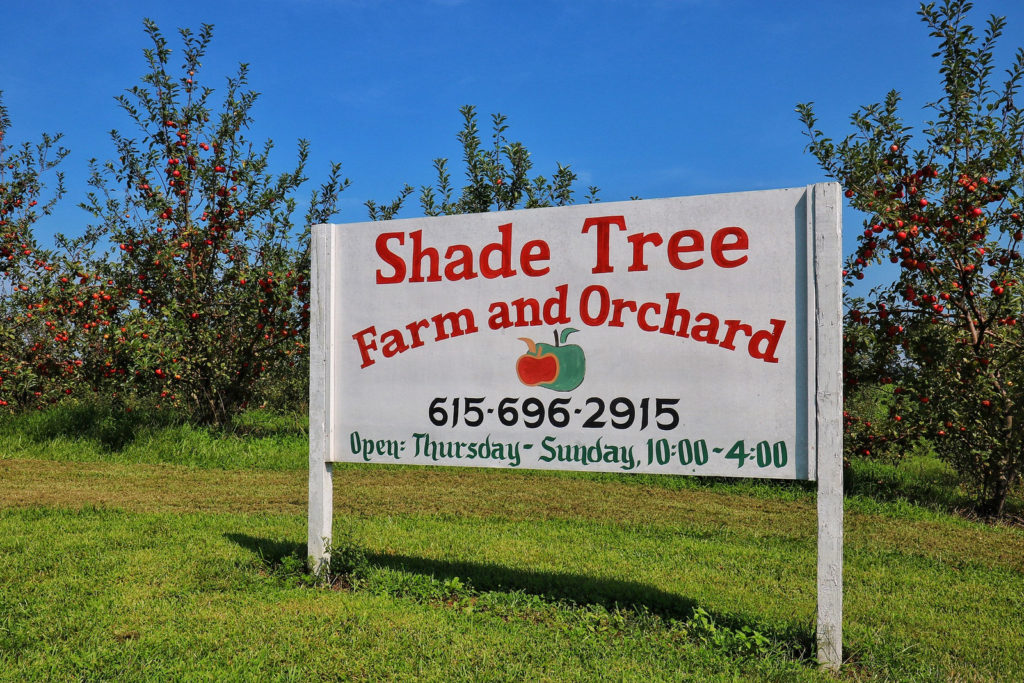
I took backroads to Adams, more for the scenery than anything else — Traffic was non-existent and the drive was beautiful. We arrived at the orchard just after nine, and as I pulled into the gates, I knew I’d made the right call. The orchard had one big hill, surrounded by miles of farmland. Only 30 or so cars were parked in the fields. It was the perfect setting for an eclipse, and with plenty of shaded picnic tables, a country store and cafe, and the orchard’s popular cider slushies, it was an ideal spot to hang out with friends and family members in the hours leading up to the big event.
We spent the morning walking around, chatting, and eating some of the food we’d brought. Just before noon, my solar eclipse app (in unison with solar eclipse apps of everyone around us) sounded the alert — First contact was about to happen. We got our NASA-approved glasses ready and took our first look at the sun.
At first, the difference was barely visible. Within a few minutes, though, the outline of the moon appeared. “It looks like someone took a big ole’ bite out of a cookie,” a woman near me observed.
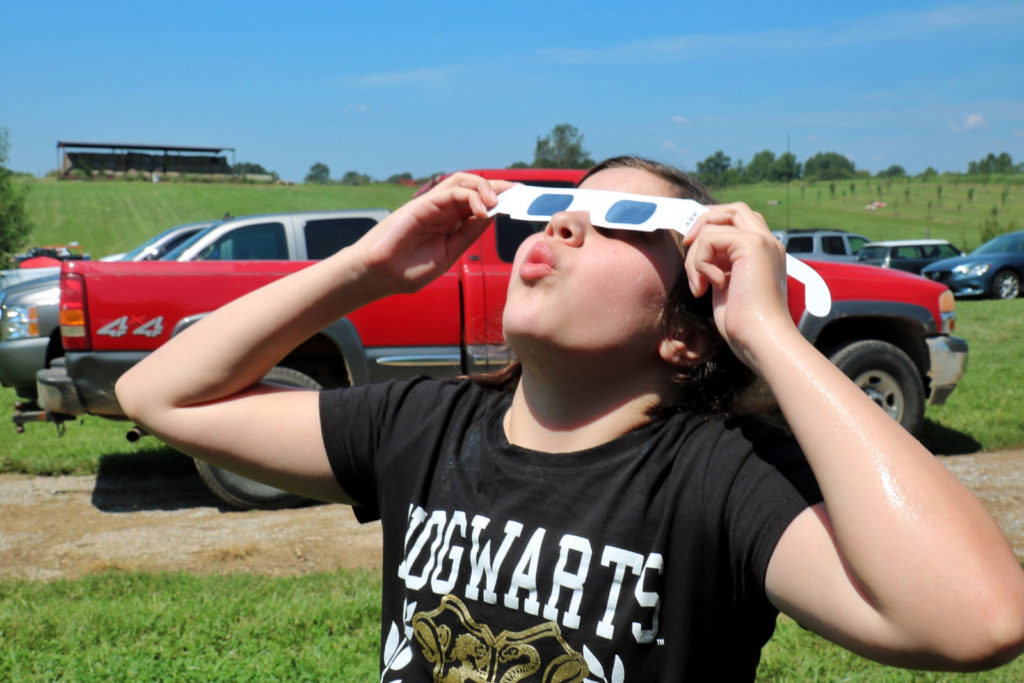
I was able to get my daughter’s reaction to seeing the eclipse for the first time — She didn’t know I had my camera out!
We still had about an hour and a half before totality — when the moon would completely cover the sun — and for the first 45 minutes or so, I wouldn’t have realized an eclipse was happening if I hadn’t seen it through my special glasses. By an hour in, though, the temperature had cooled noticeably, a light breeze had picked up, and the light had begun to fade in an eerie way. The sun still shone in the sky, but it was darker somehow. As the hour of totality approached, about 20 of us decided to head up to the top of the hill, so that we could see as much of the surrounding countryside during totality as possible.
By this time, the moon was nearly covering the sun. My son called it ‘a banana in the sky.’
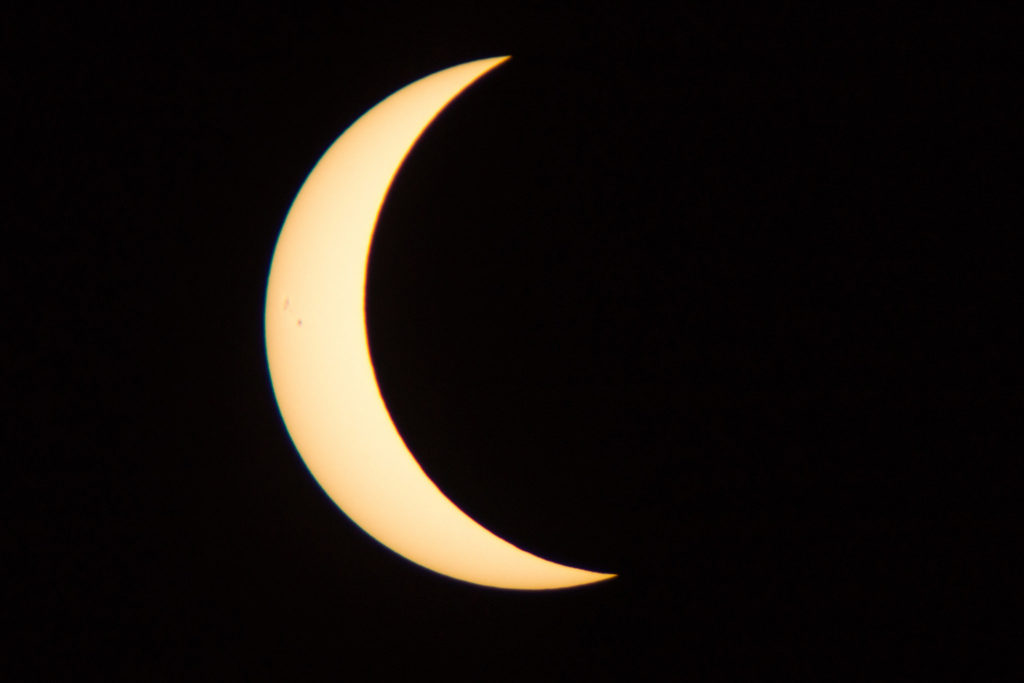
Up on the hill, the light grew dimmer and crickets began chirping. Yet even though totality was just a few minutes away, it was still clearly daylight up on our hill. I wondered if Annie Dillard had perhaps been exaggerating a bit when she claimed that the sky turned a dark blue at totality, and that darkness had swept over the land.
“I don’t believe it’s going to happen,” my daughter said beside me, as if she could read my thoughts.
“I know what you mean,” I agreed. Was all the hype we’d heard about totality unfounded? Had I wasted hours of planning time for what could best be described as ‘a dim day?’ I looked through my glasses again.
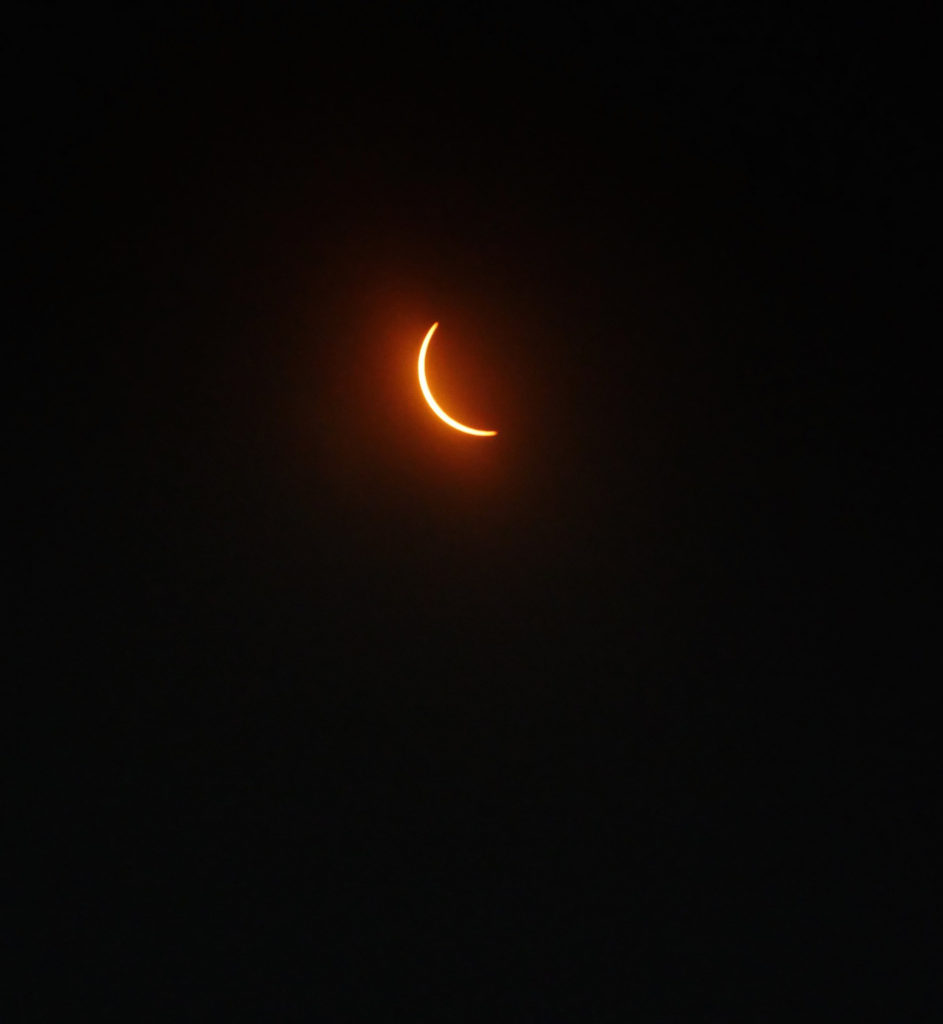
This is what it looked like through our special lenses, but in reality, the sky remained a bright blue. Only a minute remained before totality and that strange, dingy daylight still lingered. And then, suddenly, miraculously, it happened. As we all counted down together, the rolling hills around us plunged from daytime into dusk.

We took off our glasses. The sky overhead was the blue of a deep, deep ocean. And for the first and perhaps only time in my life, we discovered that we were surrounded on all sides by what looked like sunset.
But the most jaw-dropping sight of all, of course, was the sun.

It actually looked just like all the professional photos you’ve seen of a total eclipse, but even more beautiful, because the sky had turned that otherworldly, dusky blue. Around the sun, planets became visible, shining like bright stars in the sky. We alternated between staring at the sun and looking all around us in wonder.
I’m glad my friend snapped a few photos with her iPhone of this moment — Although my camera was rolling throughout totality, I wasn’t paying any attention at all to what I was shooting. I was literally overcome, laughing and crying at once and repeatedly hugging both my children. I have tears in my eyes now, just thinking about it. If you were one of the millions of people who experienced totality on Monday, I have a feeling you know exactly the rush of emotions that I’m talking about. Totality is an experience you truly never, ever forget.
I was so grateful we’d driven the distance to experience as much totality time as possible because even our 2 ½ minutes didn’t feel like enough time to take in the thrill and wonder of that awe-inspiring moment. All too soon, the ten-second warning sounded on our phones, and we took one last look at the sun before dutifully putting on our glasses.
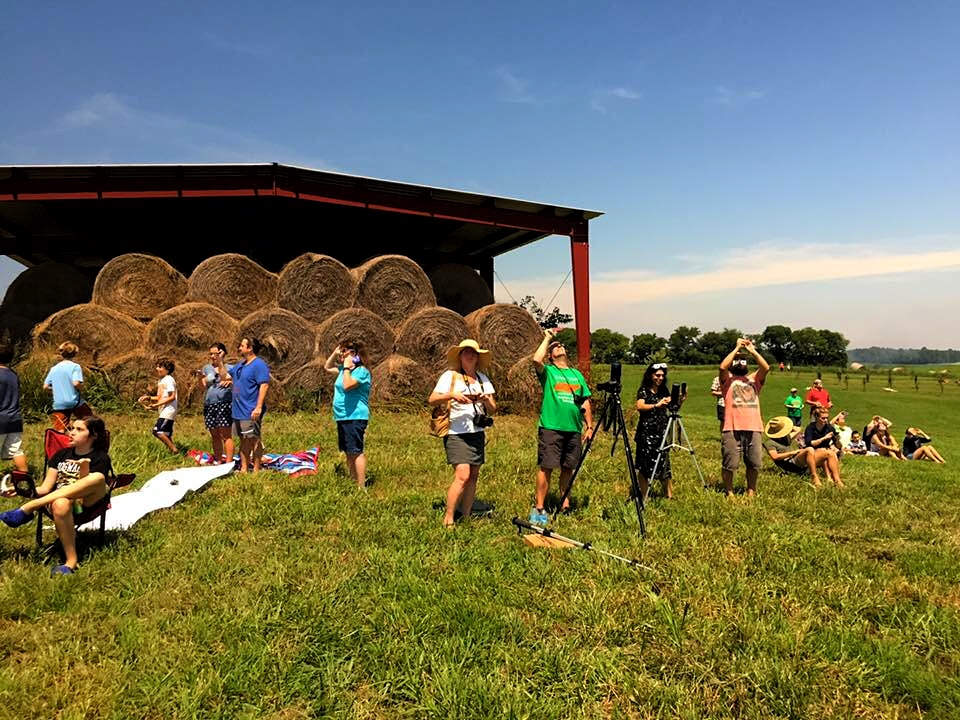
Within seconds, daylight had returned — and this is why, I realized, Annie Dillard wrote that a partial eclipse has the same relationship to a total eclipse as kissing a man does to marrying him — This is 98% totality, people. It is nothing like 100% totality.
We lingered on the hill for a while, enjoying the cooler weather until the sun grew stronger and then we headed back to the picnic tables to gather our belongings and prepare for the drive home. As we passed small groups of eclipse watchers, I overheard echoes of my own thoughts.
“Man, I wasn’t sure if that would live up to the hype, but it went WAY beyond what I was expecting!”
“What an incredible moment! A 360-degree sunset!”
“Did you see how dark it got? Amazing.”
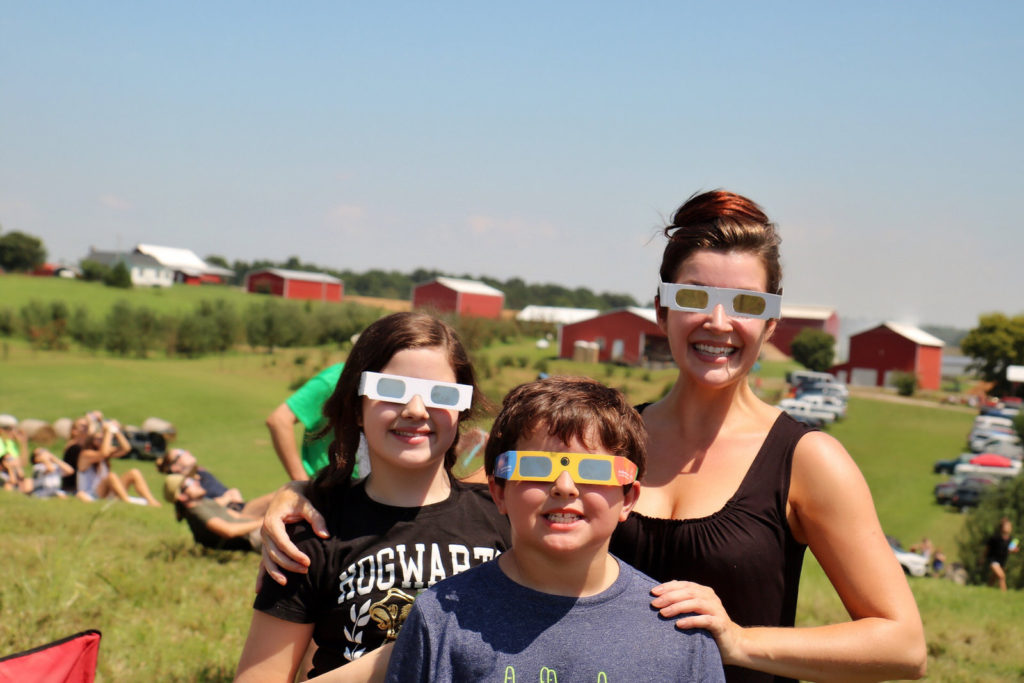
“I can’t believe I just had a moment I’ll remember the rest of my life,” my son said as we walked, gently squeezing my hand. I looked down at him and grinned. My heart was full.
If there’s a takeaway for you, it is this — I now understand why so many people out there travel the world to see as many total eclipses as possible. Once you experience one for yourself, you’ll crave more. In fact, we are already planning to travel to see the total eclipse in 2024 — We wouldn’t miss it for anything.
It was truly one of the greatest moments of my entire life.
Follow Suburban Turmoil on Facebook, Instagram, Twitter and Pinterest.
Leave a Reply Cancel reply
This site uses Akismet to reduce spam. Learn how your comment data is processed.
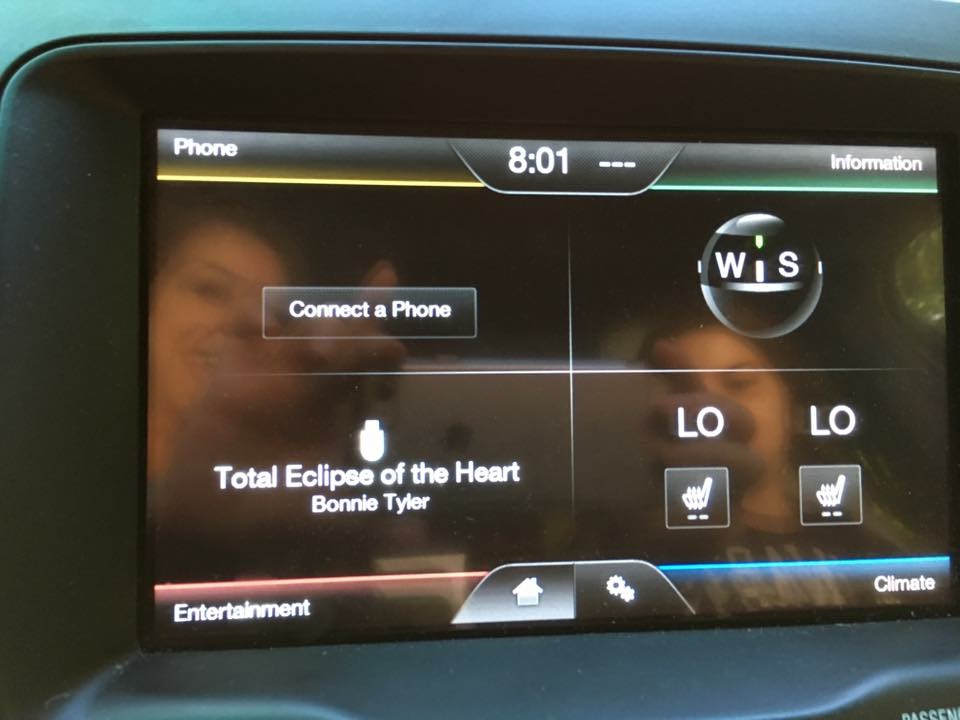
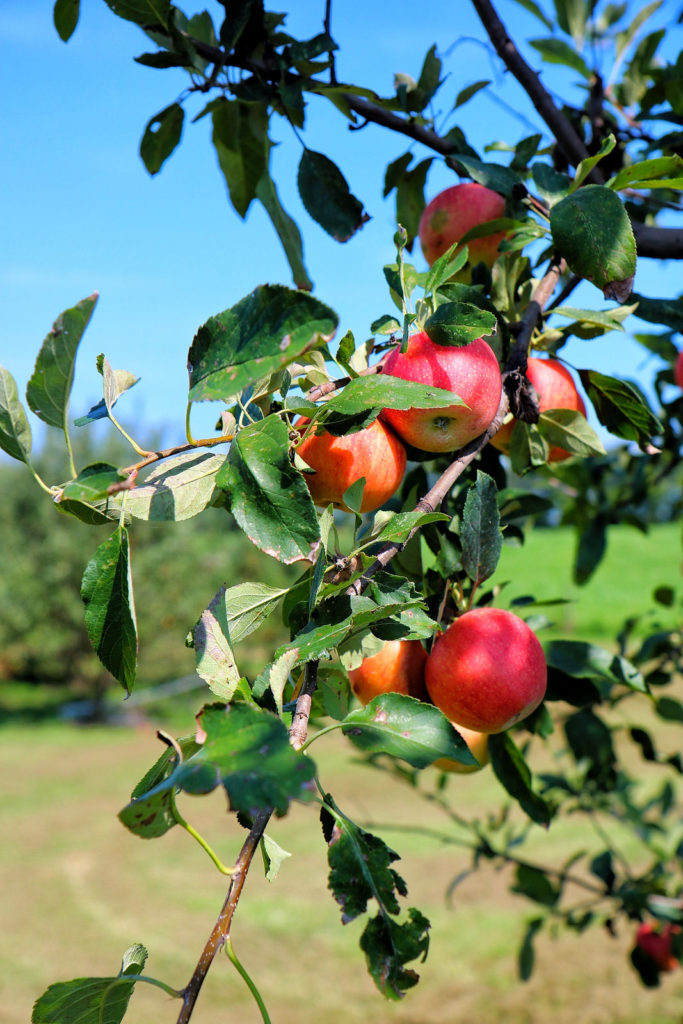

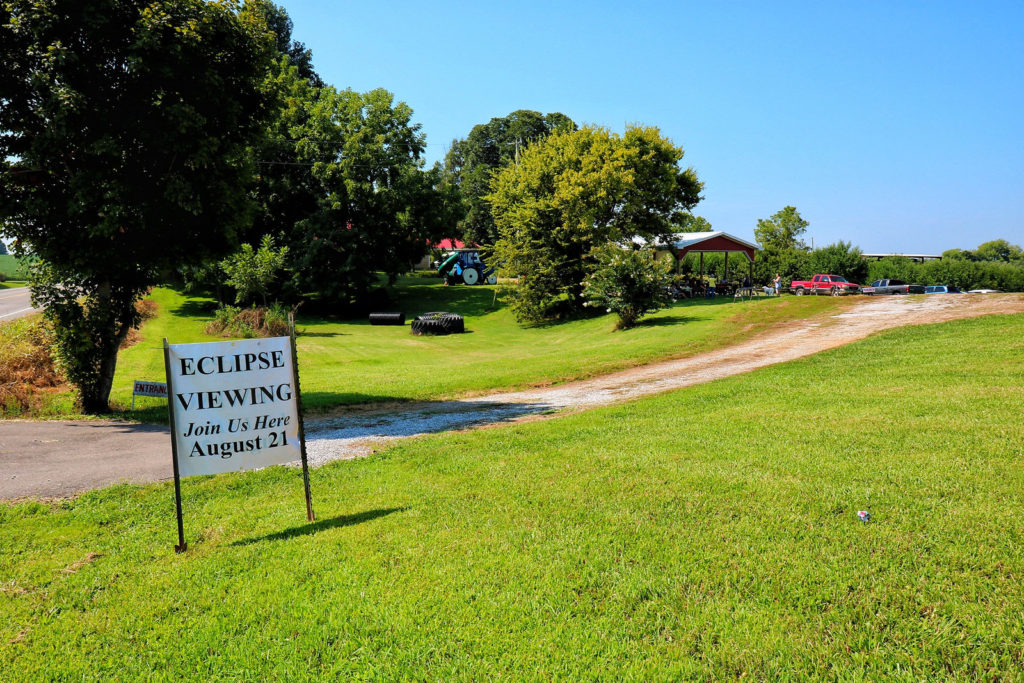

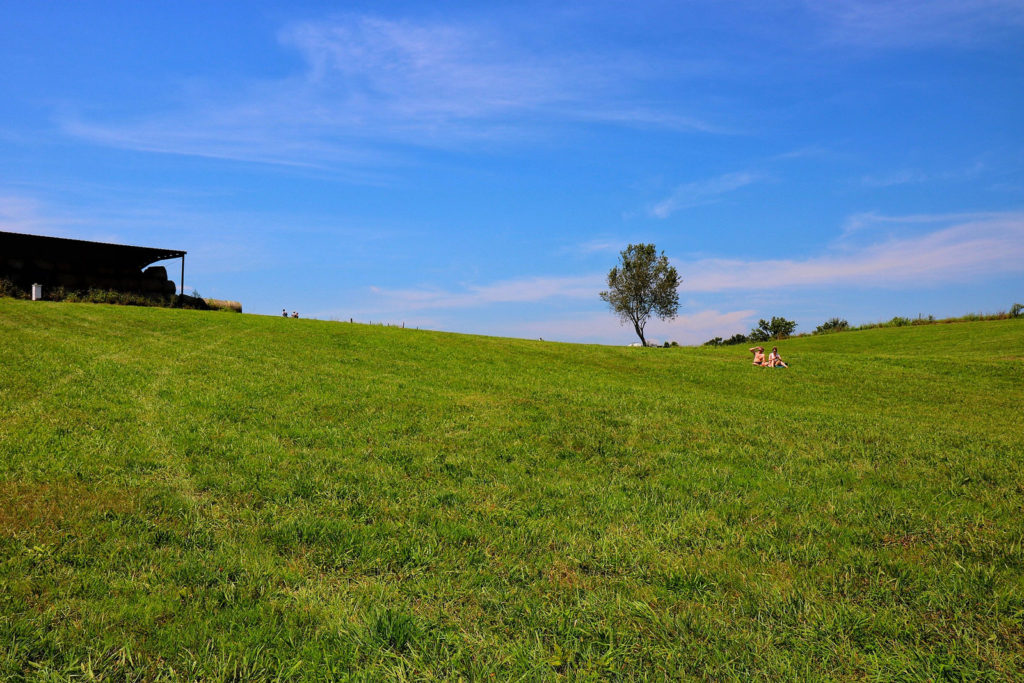
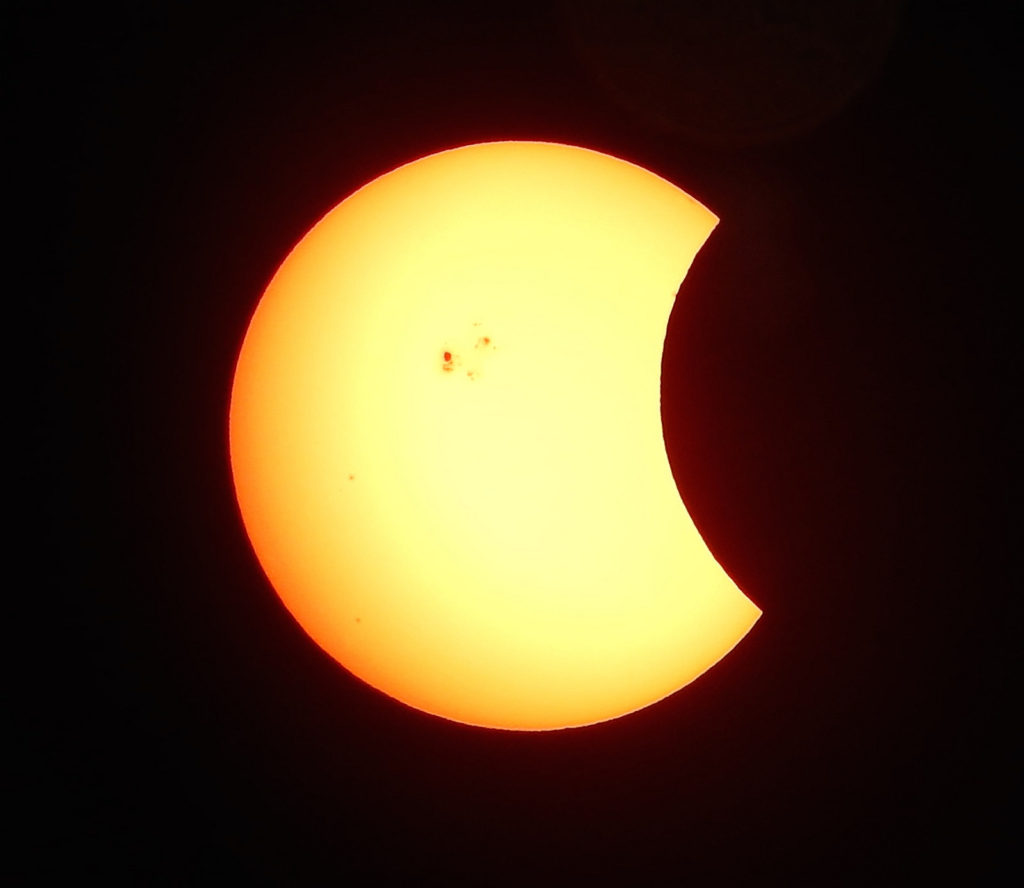

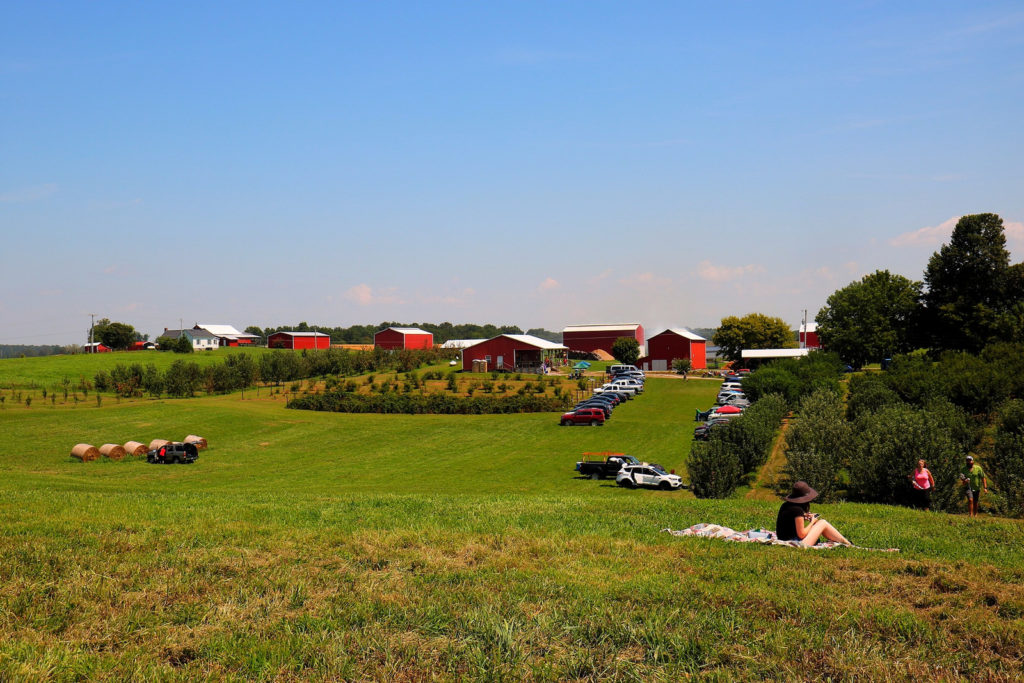
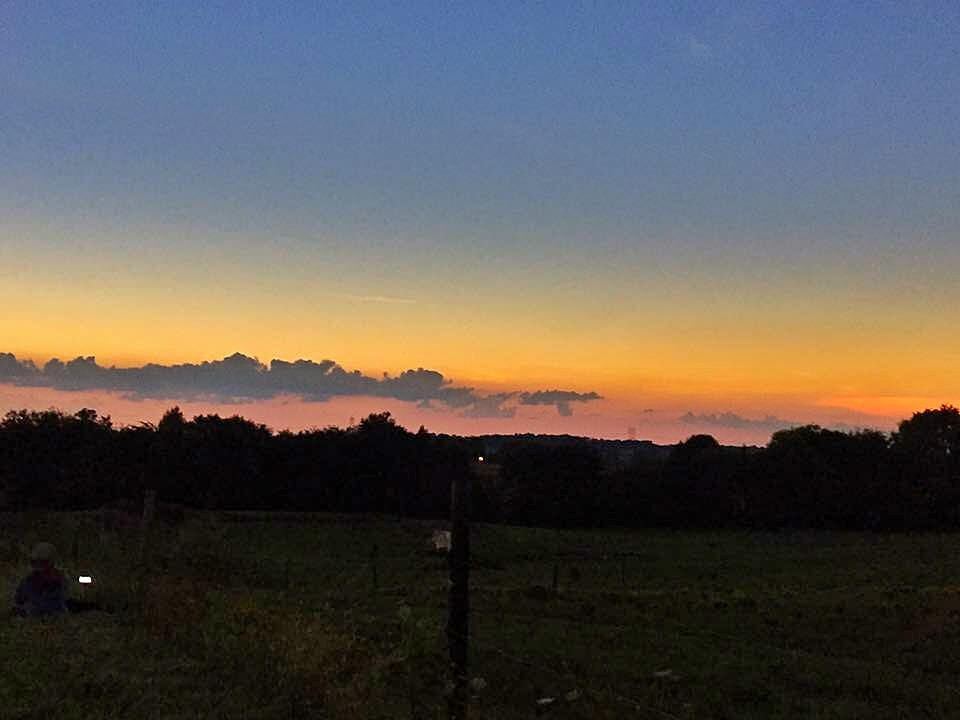

[…] again). The difference between a 99% and 100% eclipse is greater than I could have imagined – Lindsay Ferrier described the experience well. I didn’t take any pictures during the eclipse because I wanted to be fully present, but we […]